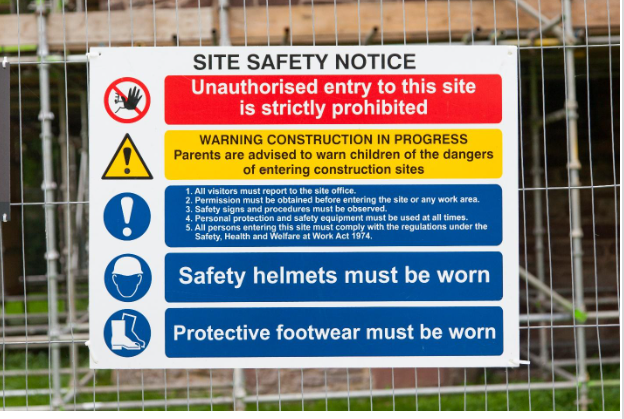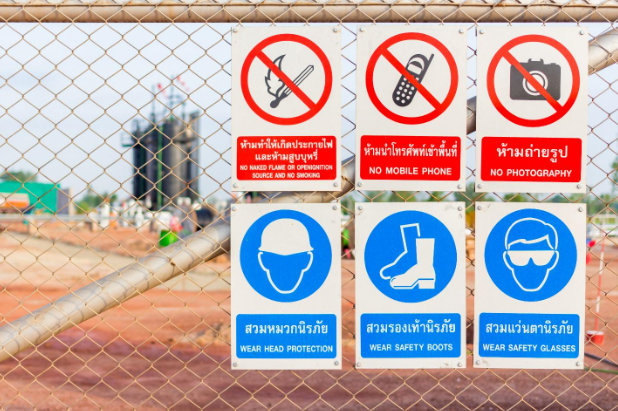What is wayfinding signage?
Wayfinding signage helps you find your way around a business, a park, a school/college, a hotel or any other location. Wayfinding signage is the type of business signage made to help people get from one point to another with signs keeping you in the right direction. You can typically find wayfinding signage in:
- Restaurants and Bars
- Recreation Centers
- Tourist attractions (water parks, mountain trails, and ski resorts)
- Educational facilities
- Financial Institutions
- Malls, retail stores
- Car dealerships
- Hotels
What is the difference between ADA Signage and Wayfinding Signage?
Wayfinding signage is not the same as ADA signage but it is very similar. Wayfinding design combines signage and map design, symbols, color, and typography to effectively navigate people through a space. Wayfinding signage is not a form of advertising or promotion.
ADA-compliant indoor location marking signs are used for locations such as the restrooms, room numbers, and directional signs. The ADA regulations include provisions for Braille, placement, and height of directional and other identifying signs in large, easy-to-read colors and fonts for those who may be visually impaired. The ADA regulations only apply to indoor areas and not to exterior signs.
Used together, wayfinding signage and ADA-compliant indoor signs make locations easier to navigate for both disabled people and the wider public, reducing the demand on staff to provide directions and reducing visitor frustration.
Wayfinding systems help businesses comply with the Americans with Disabilities Act (ADA). Local regulations that require accessibility compliance must be considered as well. An ADA-compliant wayfinding solution is designed to provide a tactile response.
Types of Wayfinding Signage:
Directional Signage
Directional signage is a collection of wayfinding signs that point toward a direction, usually using arrows. Directional Signage can be used for public safety or to provide navigational information for the control of traffic such as a common entrance or exit sign, and bear no commercial advertising.
A Directional Sign may take the form of an interior or exterior wayfinding ground sign or wall sign.
Examples of Directional Signage:
- Colored lines on the floor telling you what way to go
- Directory signage
- Steet Signs


Identification Signage
Identification signage is a style of signage that clearly marks a particular area and indicates that you have arrived at a location. Typically these signs specify the name or number of a room or the entrance to a department or office. They are generally placed adjacent to doorway entrances and most often are ADA compliant.
Examples of Identification Signage:
- Door plaques (Assistant to the Regional Manager)
- Departmental markers (Accounting and Finance; Sales)
- Landmark signage (donor plaque; historical marker)

Informational Signage
Informational signage pertains to the overall facilities. These signs give people broad information they need while navigating. Informational signage is best placed in an area with broad exposure. Lobbies, waiting rooms, building entrances, and atriums are popular examples. Signage should answer questions before they’re asked. Where are your bathrooms? How late are you open? Do you have an elevator? Are there any safety concerns in this area?
Examples of Informational Signage:
- Safety Signs (Hard hat, Use ear protection, High Visibility Jackets, Safety Footwear)
- Amenities and accommodations (free Wi-Fi; elevators)
- Facilities signage (bathrooms; exits; cafeteria)
- Business information (hours of operation; address numbers)

Regulatory Signage
Regulatory signage focuses on safety and liability concerns and sets boundaries—what is and isn’t acceptable in your facilities. It’s used to establish and reinforce rules, safety standards, and privacy expectations. Regulatory signage is generally big and bold. No frills—only a clear, concise, prominent message. Someone probably won’t open a closet if there’s a “Caution! High Voltage!” sign on the door. Similarly, displaying a “No Pets Allowed.” Informational signs should be universally understandable at a glance—signs and symbols anyone can understand. A handicap sign sets a clear precedent, just like an “Employees Only” sign on a locked door. Regulatory signs should keep people out of restricted areas as they follow directional signage to their destination.
Examples of Regulatory Signage:
- Rules and regulations (no smoking; no firearms)
- Compliance standards (ADA accessibility; high voltage sign)
- Access control (no entry beyond this point; employees only)

Interested in learning more about wayfinding signage or need to work with an expert to place an order for your building? Contact us today!



